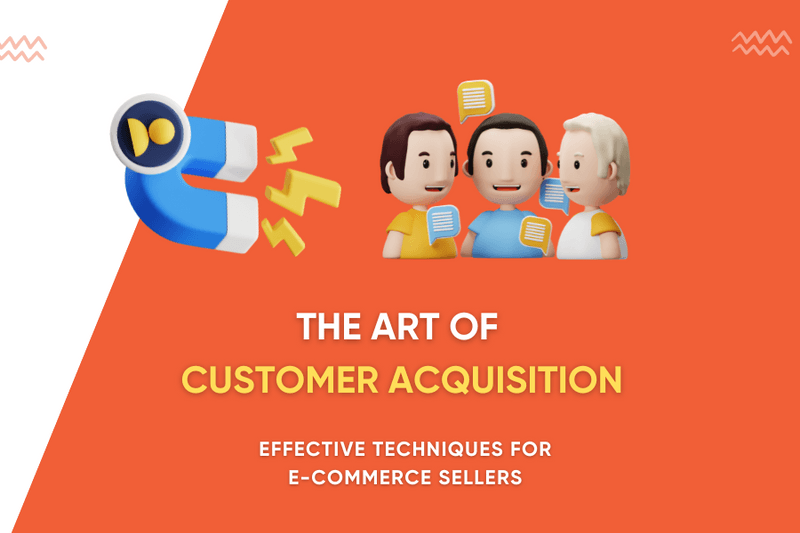
As an online seller, you know that accepting online payments is essential for your business. But with so many different payment methods available, it can be tough to know which ones are right for you.
Here are some statistics to help you get started:
According to a recent study, 80% of online shoppers in India prefer to pay with UPI.
The average Indian online shopper makes 10 online payments per month.
The total value of online payments in India is expected to reach $500 billion by 2025.
These statistics show that online payments are becoming increasingly popular in India. If you're an online seller, it's important to make sure you're accepting the most popular payment methods so that you can make it easy for your customers to buy from you.
Understanding Online Payments: The Basics

Online payments encompass a wide range of digital transactions conducted over the internet. These transactions involve customers purchasing products or services from your e-commerce store and completing the payment electronically. To make this process seamless, it's crucial to integrate reliable payment gateways and implement secure measures.
The Role of Payment Gateways

Payment gateways serve as the bridge between your e-commerce website and the financial institutions that process transactions. These gateways ensure that customers' payment details are securely transmitted, verified, and processed. Some of the popular payment gateways in India include Razorpay, PayU, Instamojo and Cashfree, each offering distinct features and pricing plans. Research and choose a payment gateway that aligns with your business needs and customer preferences.
Security First: Ensuring Safe Transactions

The security of online payments is paramount. Adopting Payment Card Industry Data Security Standard (PCI DSS) compliance and utilizing Secure Sockets Layer (SSL) certificates are essential steps to safeguard sensitive customer data. Display trust badges and security logos prominently on your website to instill confidence in customers and alleviate any concerns about data breaches.
Offering Multiple Payment Options

Mobile Payments: Addressing the Growing Trend

As mobile usage continues to surge, optimizing your online store for mobile payments is critical. Ensure your website is mobile-responsive, enabling users to make purchases seamlessly from their smartphones. Implement one-click payments to streamline the checkout process further, reducing cart abandonment rates.
Cash on Delivery: Balancing Convenience and Risk

Cash on Delivery (COD) remains a popular choice among Indian consumers due to its convenience. However, it poses logistical challenges and carries a higher risk of returns. If offering COD, establish clear return policies and verify customer details to mitigate potential losses.
Embracing UPI and QR Codes

Unified Payments Interface (UPI) has revolutionized online payments in India, allowing users to make instant bank-to-bank transfers through mobile apps. Integrating UPI-based payments and QR codes can simplify the checkout experience, making it quicker and more convenient for customers.
Currency and International Payments

If you're considering expanding your business beyond India, catering to international customers requires addressing currency conversion and cross-border payment gateways. Offer localized currency options and transparent shipping costs to enhance the shopping experience for global customers.
Optimizing for Conversion

A seamless payment process contributes to higher conversion rates. Streamline the checkout process by reducing the number of steps, offering guest checkout options, and providing real-time order confirmation. Additionally, display trust signals, such as customer reviews and security badges, to inspire confidence in potential buyers.
Monitoring and Analytics

Regularly monitor payment-related metrics, such as payment success rates, cart abandonment rates, and transaction times. Utilize analytics tools to identify pain points in the payment process and optimize accordingly. Tracking these metrics can provide valuable insights into customer behavior and preferences.
Customer Support and Dispute Resolution

Effective customer support is crucial in handling payment-related queries and resolving disputes promptly. Provide clear channels for customers to reach out, and ensure your support team is well-versed in addressing payment-related concerns.
In conclusion, mastering the world of online payments is pivotal for the success of your e-commerce venture. From integrating secure payment gateways to offering diverse payment options, prioritizing security, and optimizing for mobile, each aspect contributes to enhancing the customer experience and building trust. By navigating these strategies effectively, you can propel your online business towards greater success in the dynamic realm of e-commerce.
View more such blogs 📰
📱Mobile commerce: How to optimize your online store for smartphone and tablet users
Analyzing your E-commerce metrics: Key performance indicators for success🚀
Marketing your online store: Effective tactics for driving traffic and boosting sales
Building a strong online brand: Tips for creating a memorable and trustworthy Ecommerce presence


